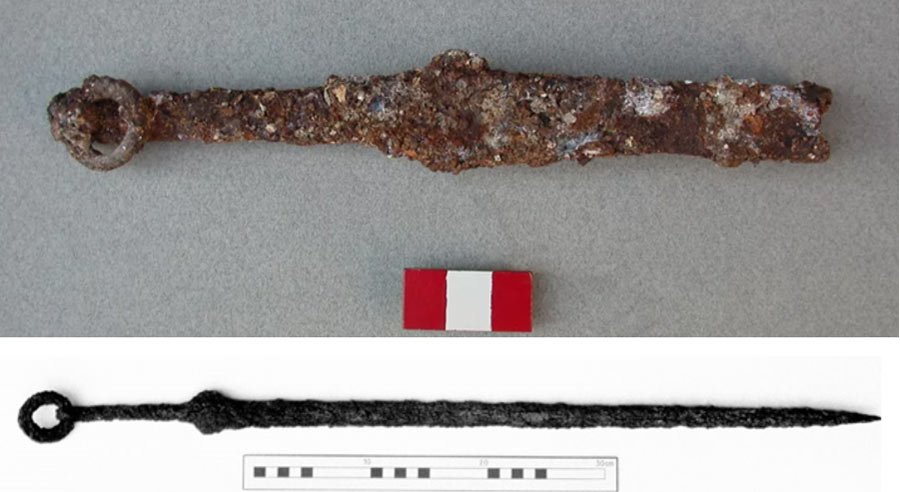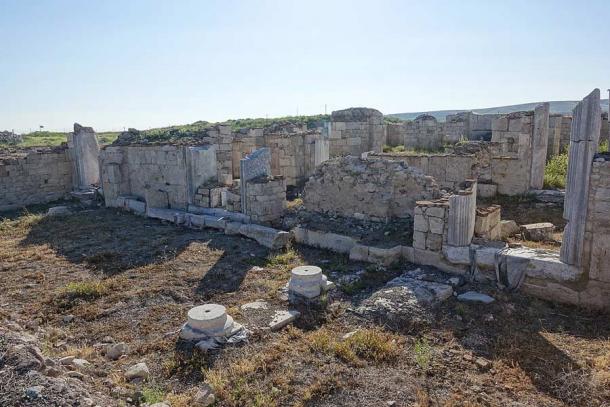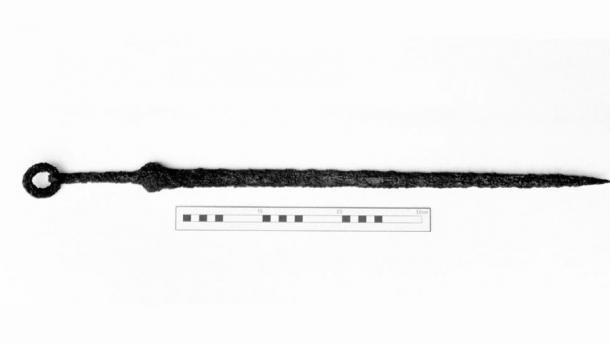Amorium was an influential, strategically positioned city in ancient antiquity, located in the kingdom of Phrygia in the west-central portion of Anatolia, in what is now Asian Turkey. Amorium was built during the Hellenistic period (323 BC–31 BC) and prospered during the Byzantine period (5th century AD–15th century AD) before being devastated by Arabs in 838 AD. The city, however, remained significant long into the 11th century.
According to the Verve Times, archaeologists have uncovered two ‘strange and distinctive’ swords from this once fiercely guarded city, one from beneath a cathedral, possibly signaling an offering.
These swords are known as ring pommel swords, but research titled ” Ring Pommeled Swords From Amorium ” released in December 2021 in The Journal of Art History demonstrated exactly how rare these instances are.
These two iron, ring-pommeled swords (where ring pommeled refers to a rounded knob at the end of the sword’s handle formed like a ring) were discovered in Amorium, which has been the scene of archeological digs since 1988.
In 1993, the first sword was discovered entirely shattered and rusted in the atrium of a church. The second was discovered in the city’s lower reaches in 2001. Both of these discoveries have been dated to the 10th-11th century AD, during the middle Byzantine period (843-1204 AD).
The inscriptions on the ring pommel handles, which were uncommon throughout the Byzantine period, are what makes these findings so unusual. The researchers said in the paper that intriguing characteristics on the swords identify “them from the ring pommeled swords of the neighboring civilizations,” as reported by Live Science.
The para meron, a broadsword bent blade widely valued by the Byzantine military, is the most common form of a Byzantine sword. Scientists were unable to determine whether clan, empire, or mercenary organization utilized the distinctive Byzantine pommeled swords discovered at Amorium based on the preliminary tests.
The Arabs and Seljuks sacked Amorium, a great city!
Amorium served as an important link between Constantinople, Nicaea (northwest Anatolia), and Ancyra (modern-day Ankara), making it a crucial first line of defense against the Arabs. Because of its strategic location, the ancient city was a major military and commerce bastion for the Byzantines. However, after two attempts, beginning with the Umayyad Caliphate’s invasion in 646 AD, the Arabs were able to almost completely demolish the city in 838 AD.
Amorium reached its pinnacle at the beginning of the eighth century under Constantine V and his successor, Michael II, who founded an Amorian dynasty with Amorium as its capital. It had grown into Asia Minor’s largest and most affluent city, which was also why it had become a target. In 838, a son of Caliph Harun al-Rashid finally seized the city and burnt it down.
After the Arab sacking, Amorium was restored, but it was burned down again in the 10th century AD. Despite the Arab raids, the city remained an important hub until the Seljuks burned it to the ground in the 1070s AD. The city never recovered from the Seljuk devastation.
In 1739, Irish clergyman Richard Pococke, known for his travel literature, rediscovered Amorium. In 1836, English geologist William Hamilton became interested in the site, and it became renowned as a ruin site but nothing else after that.
Excavations at the Amorium ruins began in 1989, funded by the British Institute of Archaeology in Ankara and different entities in the United States. Dr. Zeliha Demirel Gökalp of Anadolu University, who is the principal author of the present study, commenced fieldwork in 2014.
The sword discovered originally (in 1993) might be deemed “bizarre,” according to the main researcher Errikos Maniotis, an independent researcher from Aristotle University of Thessaloniki, Greece. Weapons have been deposited as votive offerings in churches, according to [historic] sources,” Maniotis told Live Science via email.
He went on to say that weapons in churches are “typically associated with sacred relics related with military saints.” “Furthermore, we have weaponry deposits in Mount Athos monasteries, such as a chainmail tunic kept at Iveron Monastery. Since a result, this sword might have a votive quality to it, as it could have been given to the church together with other things by its owner.”
The fact that the church sword includes a crossguard, a piece of metal that sits perpendicular to the blade at the end of the handle, adds to its unusual construction.
The second sword features a 14-centimeter (5.5-inch) long grip and a 61-centimeter (24-inch) blade, which might have been employed by a Byzantine soldier as a backup sword in battle or as an emergency blade.
In fact, the nature of these discoveries is so unique that scholars are suggesting a new term for them: “hybrid Byzantine ring pommeled swords.” While ring pommeled swords have been discovered in various historical civilizations, the Chinese Han Dynasty is said to have encouraged nomadic Scythian and Huns to copy the Chinese form of the ring pommeled sword. The Scythians and Huns taught these swords to Sarmatian mercenaries and Roman military leaders.
According to the experts, the hybrid Byzantine ring pommeled swords discovered near each other indicate the likelihood of an armory in the Amorium area producing this form of the sword handle. The paucity of supporting evidence shows that the finding of these swords at the Amorium site was purely coincidental. Additional investigation and examination of this “new” sword type are expected to provide more information in the future.
























